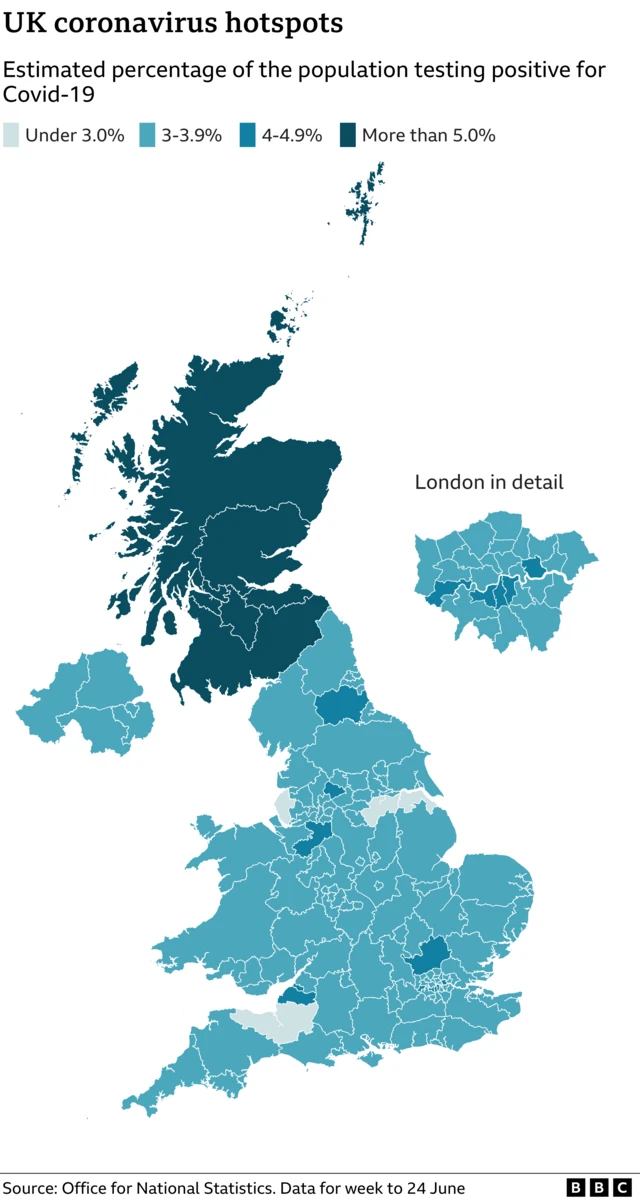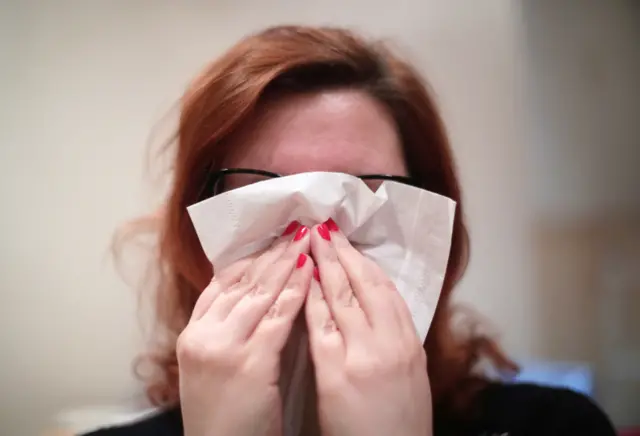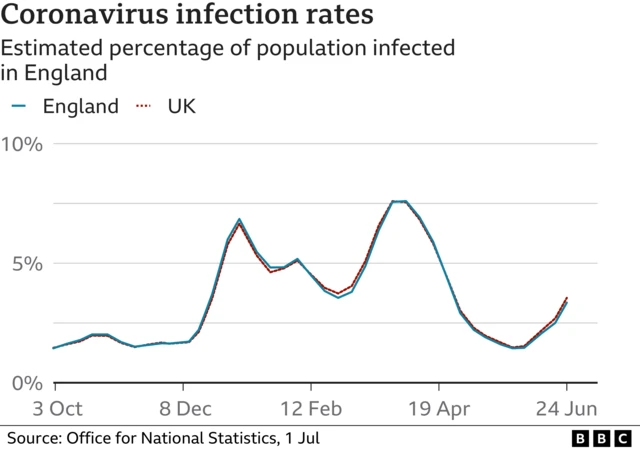Thank you for joining uspublished at 14:57 BST 1 July 2022
Thank you for joining our live coverage of the latest UK Covid data.
- The Office for National Statistics says infections jumped by 32% in a week
- During the week ending on 24 June, 2.3 million infections were recorded across the UK
- One in 30 people in England and Wales, one in 25 in Northern Ireland and one in 18 in Scotland have the virus
- Experts say two sub-variants of Omicron - called BA.4 and BA.5 - are driving the new infections in the UK and elsewhere
- Today's figures come from a random selection of tens of thousands of people taking Covid tests, regardless of whether they had symptoms
- People can catch the newer variants even if they have had coronavirus recently.
- Vaccines are still offering strong protection against severe illness and the new variants are not thought to be any more dangerous
- Sir Jonathan Van-Tam, England's former deputy chief medical officer, told the BBC the Covid situation now "is much, much, much closer to seasonal flu"
- Autumn booster shots will be offered to anyone over the age of 65, health and care staff, and adults aged 16-64 who are particularly vulnerable to severe Covid
Read more about today's ONS figures here.
The live page writers were James Clarke, Charley Adams and Malu Cursino. Our editors were Nathan Williams and Rob Corp.

















